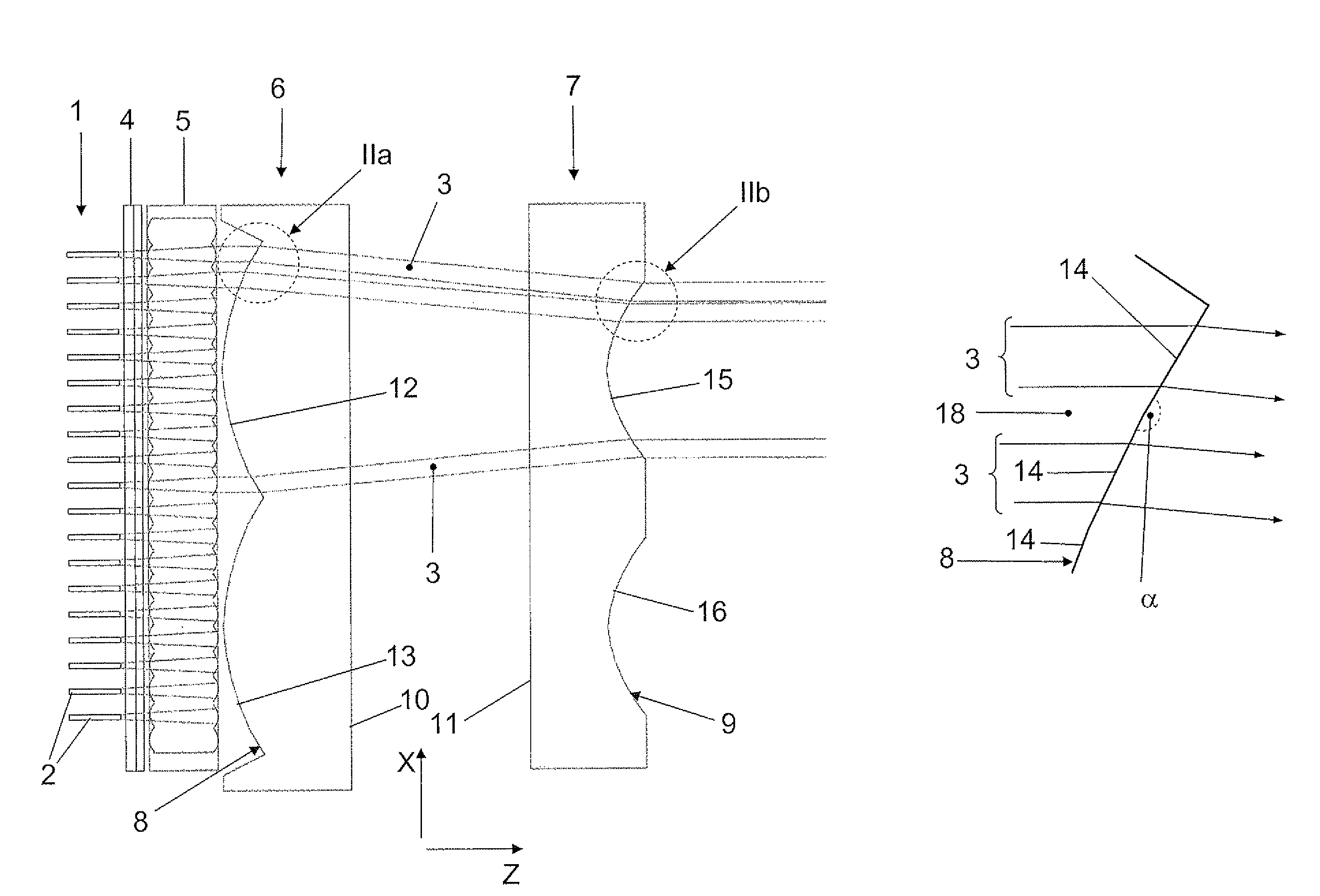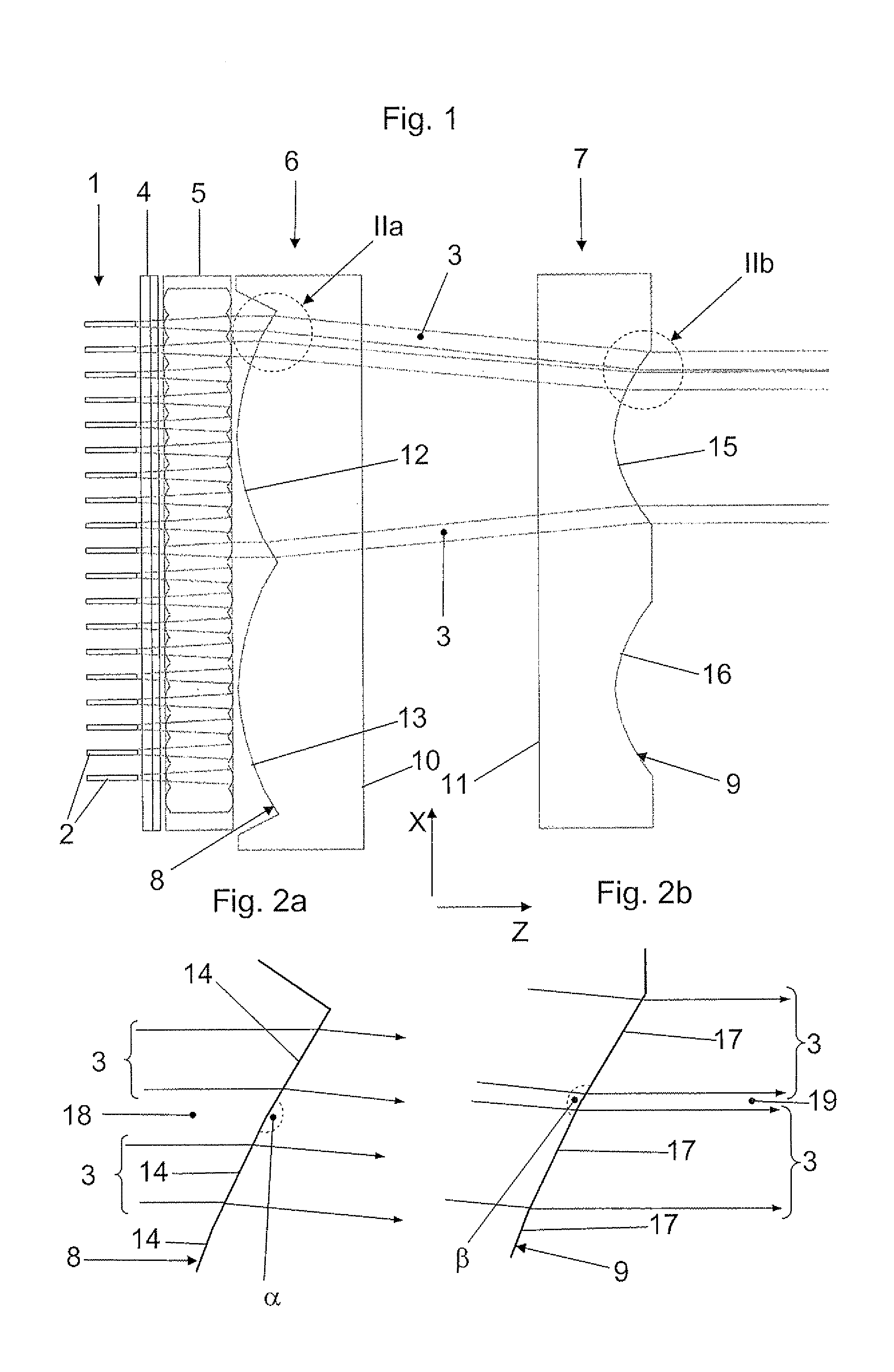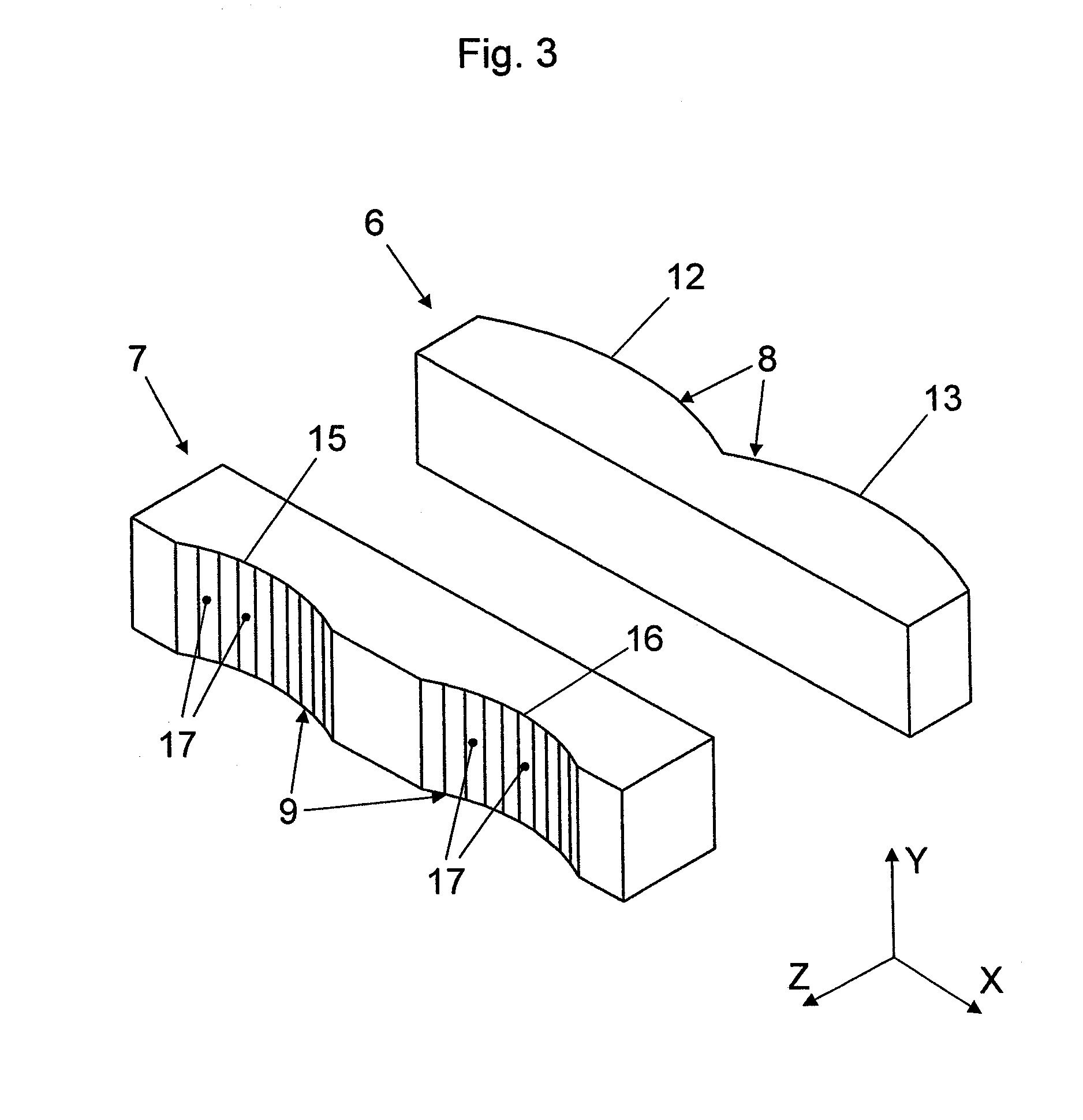Device for shaping laser radiation
a laser radiation and radiation technology, applied in the direction of instruments, nuclear engineering, optical elements, etc., can solve the problem of design-related brightness limits of the overall laser system, and achieve the effect of greater brightness and better focus
- Summary
- Abstract
- Description
- Claims
- Application Information
AI Technical Summary
Benefits of technology
Problems solved by technology
Method used
Image
Examples
Embodiment Construction
[0032]In the figures, Cartesian coordinate systems are indicated for better guidance.
[0033]In FIG. 1, the reference 1 denotes a laser diode bar and the reference 2 denotes the individual emitters of the laser diode bar 1, which are arranged is spaced apart next to one another in the so-called slow axis i.e. the X direction in the figures. For example, each of the emitters 2 has a length of about 150 μm in the slow axis, the distance between two neighboring emitters 2 in this direction being about 400 μm. The individual emitters 2 emit sub-beams 3 of the laser radiation of the laser diode bar 1.
[0034]The embodiment of a device according to the invention, which may be seen in FIG. 1, comprises a fast-axis collimation lens 4 behind the emitters 2 in the propagation direction Z, which collimates the individual sub-beams 3 in the so-called fast axis i.e. the Y direction in the figures.
[0035]Behind the fast-axis collimation lens 4 in the propagation direction Z, a beam transformation devi...
PUM
 Login to View More
Login to View More Abstract
Description
Claims
Application Information
 Login to View More
Login to View More - R&D
- Intellectual Property
- Life Sciences
- Materials
- Tech Scout
- Unparalleled Data Quality
- Higher Quality Content
- 60% Fewer Hallucinations
Browse by: Latest US Patents, China's latest patents, Technical Efficacy Thesaurus, Application Domain, Technology Topic, Popular Technical Reports.
© 2025 PatSnap. All rights reserved.Legal|Privacy policy|Modern Slavery Act Transparency Statement|Sitemap|About US| Contact US: help@patsnap.com



